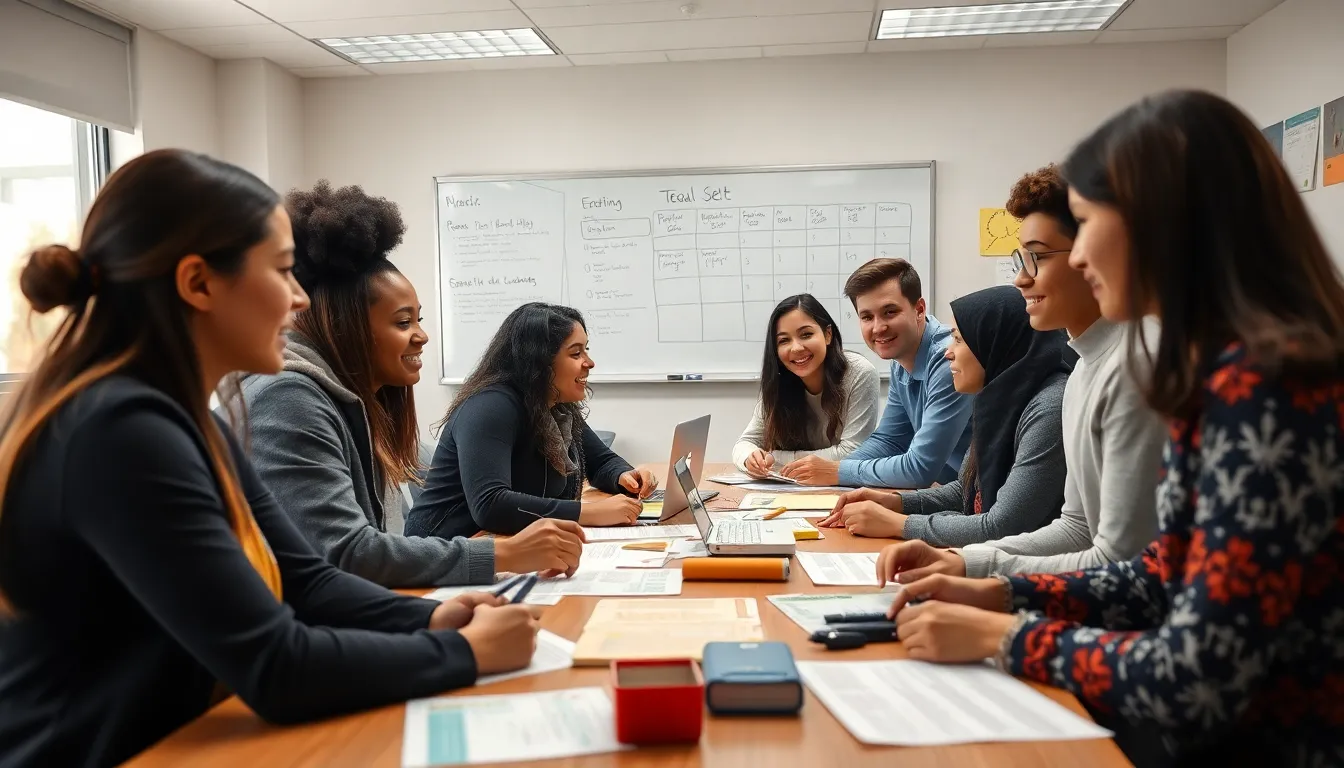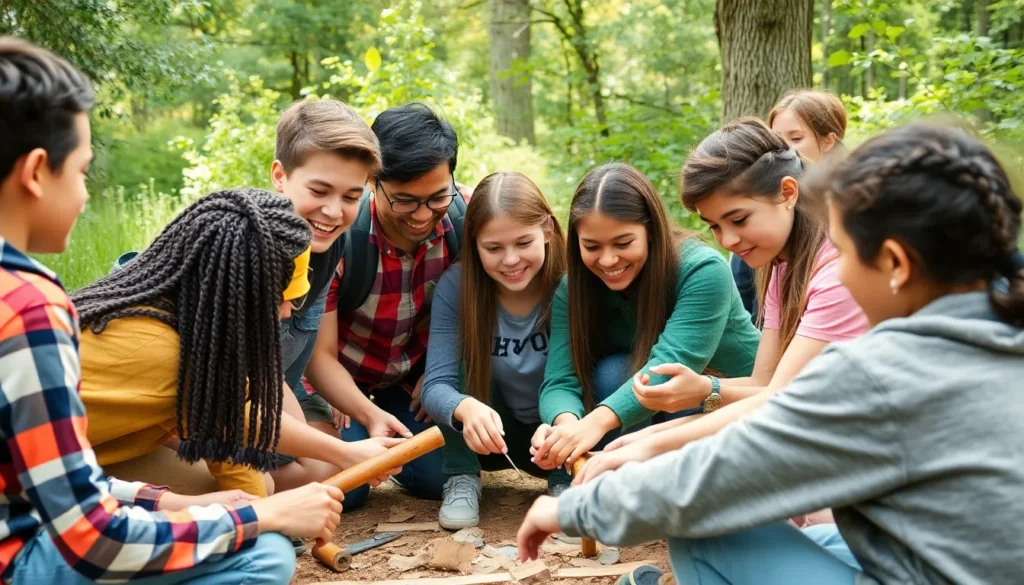Table of Contents
ToggleIn a world where challenges often feel like giant boulders blocking the path to success, cultivating a growth mindset can turn those boulders into stepping stones. Embracing a growth mindset isn’t just a trendy catchphrase; it’s a powerful approach that can transform failures into valuable lessons. Imagine tackling obstacles with the optimism of a puppy chasing its tail—boundless energy and relentless determination!
Growth mindset activities are the secret sauce that can help anyone, from students to seasoned professionals, unlock their potential. These engaging exercises not only boost resilience but also sprinkle a little fun into the learning process. So if you’re ready to ditch the fixed mindset and embrace a life filled with possibilities, let’s dive into some activities that’ll have you thinking, “I can do this!” in no time.
Understanding Growth Mindset
Growth mindset refers to the belief that abilities and intelligence can develop through dedication and hard work. This type of mindset fosters a love for learning and resilience, essential for personal development.
Definition of Growth Mindset
Growth mindset emphasizes the idea that skills can evolve with effort. Carol Dweck, a psychologist, introduced this concept highlighting the power of perseverance. In contrast to a fixed mindset, which sees abilities as static, growth mindset encourages individuals to embrace challenges. This approach promotes a focus on improvement rather than perfection. Individuals adopting this mindset view failures as learning opportunities. They understand that effort can lead to mastery over time.
Importance of Growth Mindset
Adopting a growth mindset significantly impacts individual performance. Individuals with this mindset approach challenges positively, leading to higher resilience. Research indicates that students with a growth mindset achieve better academic results. They engage more deeply with their learning process, fostering creativity and innovation. Professionals also benefit, as a growth mindset encourages continuous learning and adaptability in fast-changing environments. Embracing this mindset cultivates a willingness to seek feedback and make improvements. This ultimately leads to greater success in personal and professional pursuits.
Types of Growth Mindset Activities

Engaging in a variety of growth mindset activities fosters resilience and boosts learning. Below are distinct types of activities designed to cultivate a growth mindset.
Classroom Activities
Classroom activities can effectively promote a growth mindset. Implement project-based learning to encourage students to tackle real-world problems. Use peer feedback sessions to create an environment of constructive criticism, allowing students to learn from one another. Incorporate reflective journals where students document challenges faced and lessons learned. Utilize collaborative group work to emphasize the value of teamwork and diverse perspectives. Create goal-setting exercises that encourage students to set, pursue, and achieve their objectives. Such activities help students embrace challenges and view mistakes as integral to their learning process.
Outdoor Activities
Outdoor activities offer unique opportunities to develop a growth mindset. Organize team-building exercises that challenge participants physically and mentally, promoting perseverance. Set up obstacle courses that require critical thinking and collaboration to complete. Host nature hikes where participants reflect on personal growth and set new goals. Engage in sports that allow individuals to experience wins and losses, fostering resilience through practice and improvement. Schedule community service projects, teaching participants the value of contributing while learning from hands-on experiences. These activities encourage individuals to step outside their comfort zones and embrace the learning journey.
Implementing Growth Mindset Activities
Engaging in growth mindset activities can significantly enhance learning and resilience. Educators and parents both play vital roles in this process.
Strategies for Educators
Incorporate project-based learning to foster real-world problem-solving skills. Use peer feedback sessions to encourage constructive criticism among students. Introduce reflective journals where students can articulate their thoughts and experiences. Encourage collaborative group work to develop teamwork skills and foster a sense of community. Integrate goal-setting exercises that help students track their progress and celebrate achievements. Each strategy aims to create a supportive environment where challenges become opportunities for growth.
Tips for Parents
Model a growth mindset by sharing personal stories of overcoming challenges. Encourage conversations about failures as learning opportunities, emphasizing the importance of perseverance. Promote resilience through activities like puzzles, games, and sports that require critical thinking. Celebrate effort, not just results, by praising hard work and determination. Provide resources such as books and videos that reinforce growth mindset principles. Each tip helps create a nurturing atmosphere where children feel empowered to embrace learning and development.
Measuring the Impact of Growth Mindset Activities
Evaluating the effectiveness of growth mindset activities involves diverse methods. Collecting quantitative data through assessments tracks student progress effectively. Standardized tests show marked improvement in areas such as problem-solving and critical thinking. Teachers can also evaluate performance in coursework, noting changes in engagement levels. Observations provide insightful evidence of shifts in attitude, as students embrace challenges more readily. Continuous assessment ensures that adjustments to teaching strategies occur, optimizing learning experiences.
Assessing Student Progress
Tracking individual growth through formative assessments proves beneficial. Quizzes, assignments, and projects yield valuable insights into understanding and skill acquisition. Regular checkpoints allow educators to identify areas needing improvement swiftly. Self-assessments engage students in reflecting on their learning journey, fostering ownership of their progress. Incorporating peer assessments encourages collaboration, as students provide constructive feedback to one another. Documenting these advancements visualizes growth over time, reinforcing the positive impacts of a growth mindset.
Feedback and Reflection
Providing ongoing feedback establishes a framework for continued development. Constructive comments highlight strengths and areas for improvement, guiding learning paths. Encouraging students to reflect on their experiences deepens their understanding of the learning process. Journaling allows them to express thoughts and feelings, reinforcing lessons learned. Structured feedback sessions create opportunities for dialogue, where students can ask questions and clarify doubts. This dynamic interaction nurtures a culture of open communication, essential for cultivating a growth mindset.
Embracing a growth mindset opens doors to endless possibilities. By engaging in targeted activities, individuals can cultivate resilience and a love for learning. These experiences not only enhance personal development but also foster a collaborative spirit among peers.
As educators and parents implement these strategies, they create a supportive environment that celebrates effort and encourages exploration. The journey toward a growth mindset is ongoing, filled with valuable lessons and opportunities.
Ultimately, adopting this mindset transforms challenges into stepping stones for success, paving the way for a brighter future.







